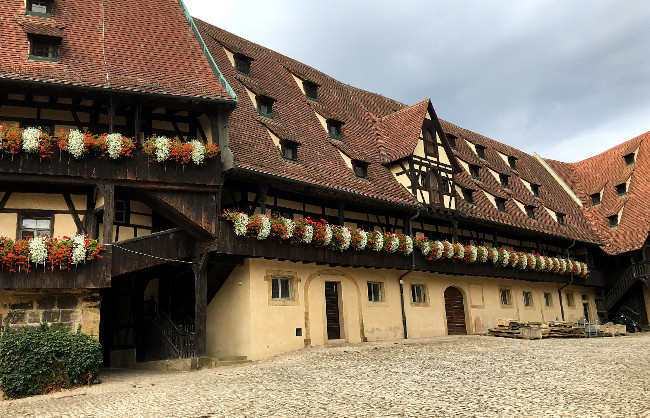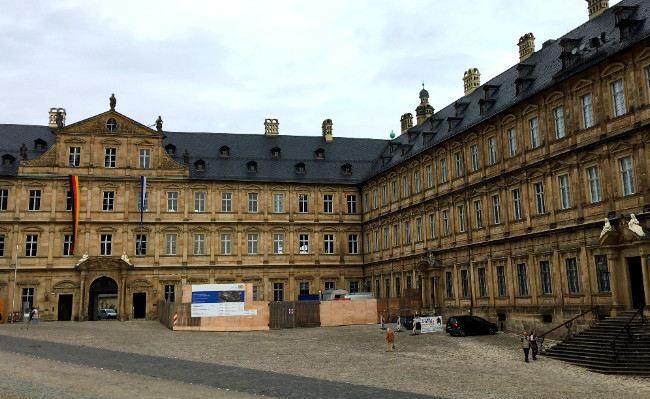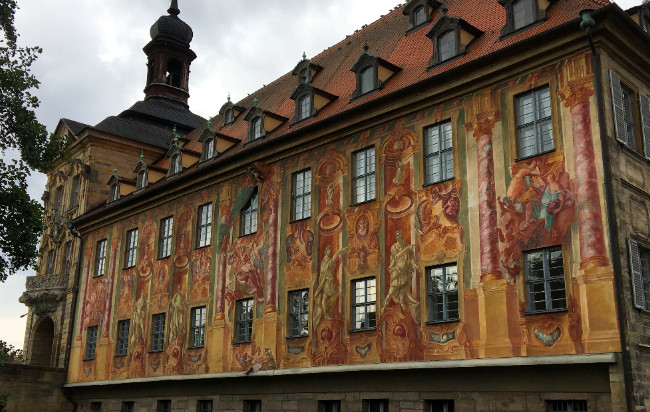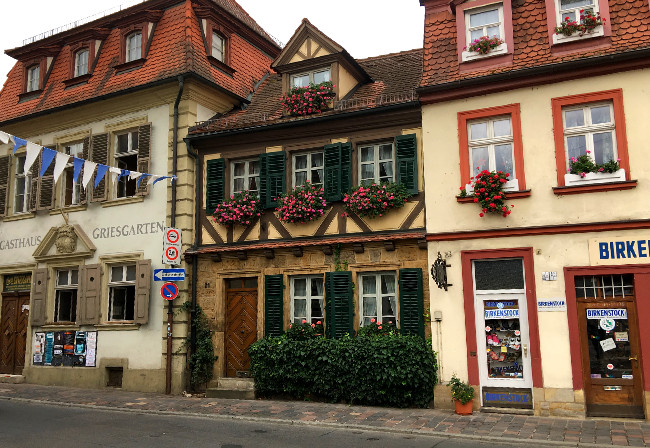Bamberg – the Franconian Rome

Built on seven hills flanking the River Regnitz and containing centuries of historic architecture, the Old City of Bamberg inevitably drew comparisons with Rome and was declared a UNESCO World Heritage Site in 1993, due in part to its authentic Medieval appearance. From its establishment as a bishopric in 1007, the city underwent considerable growth and building programs that can still be seen in the wide variety of architectural styles from 12th century Romanesque to 18th century Roccoco. For a short time Bamberg was even the centre of the Holy Roman Empire.

The Cathedral of St Peter and St George, founded in 1004 and currently undergoing external restoration, was partially destroyed and rebuilt in several stages so that it straddles Romanesque and Gothic styles. It contains the tombs of the Holy Roman Emperor Heinrich II and his Queen Kunigunde, as well as that of Pope Clement II who was bishop of Bamberg from 1040 to 1046.

Adjoining the Cathedral is the original bishops’ palace – the Alte Hofhaltung or Old Court – now a museum. The Renaissance style entrance portal and Chancellery date from the 16th century, while the inner court’s half-timbered buildings (below) are largely 15th century.


In contrast, the New Residence across the square is a massive 17th century Baroque structure with ornate interiors and a beautiful rose garden and café at the rear, from which panoramic views of the city’s rooftops can be seen. It now serves as the State Library and a gallery of Medieval and Renaissance paintings.

However interesting these architectural gems were, the real draw card for many of our fellow travellers was the Dominikanerstrasse containing several brew houses. This was because Bamberg’s other claim to fame is its inky black Rauchbier – “smoke beer’. Its distinctive flavour comes from roasting malt over beechwood coals. The city has ten independent breweries producing 30 different ales and apparently no trip to Bamberg is complete without a visit to one of its traditional taverns, such as Schlenkerla.

Further down the street we also stopped at the pretty Ambräusianum, a brewpub or microbrewery, for more beer and lunch, before heading back to our river ship.

Bamberg’s unusual and fascinating Altes Rathaus (Old City Hall) occupies a strange position on a little artificial island between two bridges over the River Regnitz, connecting the Old City with the newer city on the other bank. It was constructed in stages, more than 300 years apart, so it displays a basically Gothic core with the half-timbered medieval style at one end and the frescoed Baroque style at the other.

The trompe l’œil frescoes lend a three dimensional appearance to the building, although there is one feature that really is three dimensional – above the ‘swagged’ window there protrudes the bottom half of a naked cherub – quite an amusing curiosity!

Crossing the bridge we had a marvellous view of a pretty row of Medieval houses along the river is known as Little Venice, comprised of the former fishermen’s houses, and the old abbatoir now used as a University building. The strip of land sandwiched between the River Regnitz and the Rhine-Main-Danube canal where our ship lay waiting for us is home to the newer part of town with the main shopping district.

This island city contains the main market place, commercial shops, cafés, restaurants and other businesses in historical buildings as well as large more modern chain stores. It is also the university town with several schools and faculty buildings, such as the Otto-Friedrich University building at Kapuzinerstrasse 16.

It’s not hard to understand why Bamberg is such a well-loved city. It was fortunate to escape the destruction caused by WWII and so is a real time capsule of original architectural styles and heritage. Apart from the visitors from our river ship, it did not appear to suffer from hordes of tourists and so maintained a friendly and relaxed welcome. Certainly well worth the stop on our Splendours of Europe Cruise.































